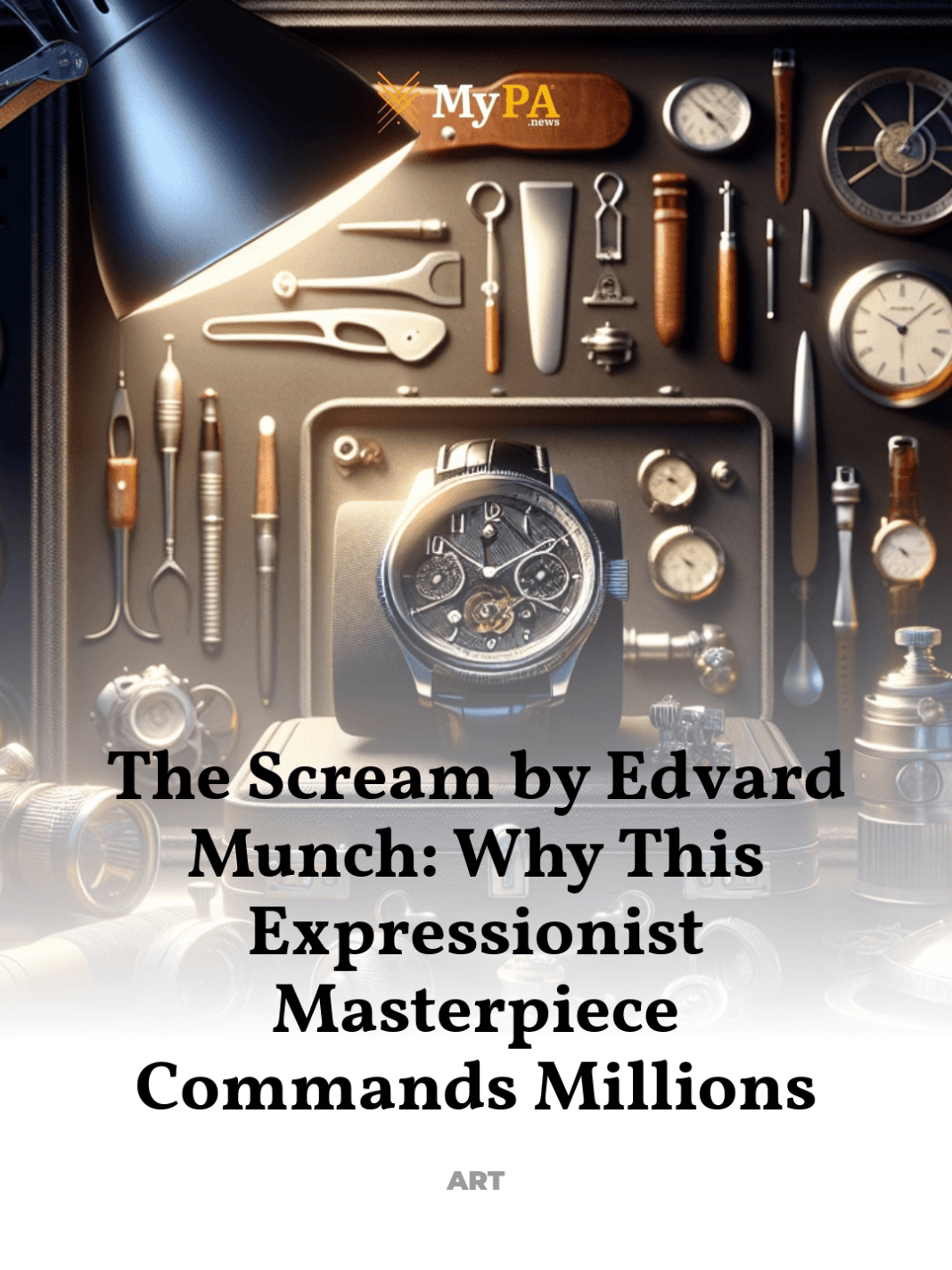The Story Behind the World’s Most Haunting Painting
The Scream by Edvard Munch is not just a painting; it is a symbol of modern existential angst and an icon of cultural resonance. This masterpiece, which has captivated audiences and collectors for over a century, stands as a testament to the profound depth of expressionist art.
- The Genesis of The Scream
- Symbolism and Interpretation
- Impact on Art and Culture
- The Scream in the Modern Era
- Concluding Reflections
The Genesis of The Scream
Edvard Munch, born in 1863 in Norway, was a painter who delved deep into the psychological underpinnings of human emotion, often intertwining it with his personal traumas. The Scream, created in 1893, is his most famous work and has its roots deeply embedded in Munch’s troubled past and delicate mental state.
The inception of this iconic piece is often linked to a personal journal entry from Munch, describing an experience while walking at sunset when the sky turned blood red, and he felt an immense scream pass through nature. This moment, both terrifying and profound, catalyzed the creation of The Scream, which depicts a figure against a tumultuous orange sky, an embodiment of an intense emotional experience.
The painting is renowned not only for its striking visual impact but also for its innovation in form and technique. Munch’s use of vibrant colors and fluid lines creates a visual echo of the figure’s emotional turmoil, making it a powerful expression of human anxiety.
Symbolism and Interpretation
The Scream is rich in symbolic elements that transcend its immediate visual impact. The agonized figure in the foreground represents the existential dread and anxiety that Munch felt, reflecting broader themes of human vulnerability and isolation. The swirling sky and undulating landscape around the figure enhance the sensation of distortion and disorientation.
Art historians and critics have often interpreted this work as a manifestation of modern man’s spiritual anguish in an industrialized and rational world. The figure’s open mouth and hands pressed against the ears may symbolize a human cry unheard in the chaos of modern society.
The use of color in The Scream also carries deep symbolism. The fiery sky could be seen as apocalyptic, possibly reflecting Munch’s interest in the mysticism and the new scientific discoveries of his time, like X-rays and electromagnetic radiation, which could have influenced his perception of the unseen forces in nature.
Impact on Art and Culture
The Scream has had a profound impact on both the art world and popular culture, echoing through various forms of media and multiple artistic disciplines. As a pioneering piece of the Expressionist movement, it broke away from the traditional styles of the time, prioritizing emotional expression over physical reality.
This painting has inspired countless artists, from Andy Warhol to Tracey Emin, who have reinterpreted its themes and aesthetics in their works. Moreover, The Scream has permeated popular culture, appearing in everything from fashion to films, and even becoming an emoticon used to express despair and fear, illustrating its enduring relevance and universal appeal.
The Scream’s influence is also evident in academic circles where it is studied for its innovative use of color, its exploration of psychological themes, and its overall contribution to the development of modern art. It stands as a critical educational tool in understanding the evolution of artistic expression and its interaction with human emotion.
The Scream in the Modern Era
In today’s art market, The Scream holds a place of honor, not only as a masterpiece of Expressionism but also as a coveted piece among collectors and museums. Its historical significance and iconic status continue to command high valuations and intense public interest.
The painting’s allure in the luxury collectibles market is undeniable. It represents not just a pivotal artistic achievement but also an artifact of profound cultural heritage. Its value is enhanced by its deep emotional connection with audiences, its pioneering style, and its influence on various art forms.
Moreover, The Scream’s relevance in contemporary discussions around mental health and societal pressures speaks to its timeless nature. It continues to resonate with modern audiences, reflecting universal themes of fear, anxiety, and human vulnerability.
Concluding Reflections
The Scream by Edvard Munch is more than just a painting; it is a cultural icon that encapsulates the existential angst of the modern human condition. Its haunting imagery and profound emotional depth have made it a centerpiece in discussions about art, culture, and human psychology.
As we continue to navigate a rapidly changing world, The Scream remains a powerful reminder of the emotional and psychological impacts of societal change. Its legacy endures, a testament to Munch’s genius and the enduring power of art to reflect and shape human experience.
For further exploration of Scream by Edvard Munch and its cultural impact, visit authoritative sources such as the Munch Museum.



